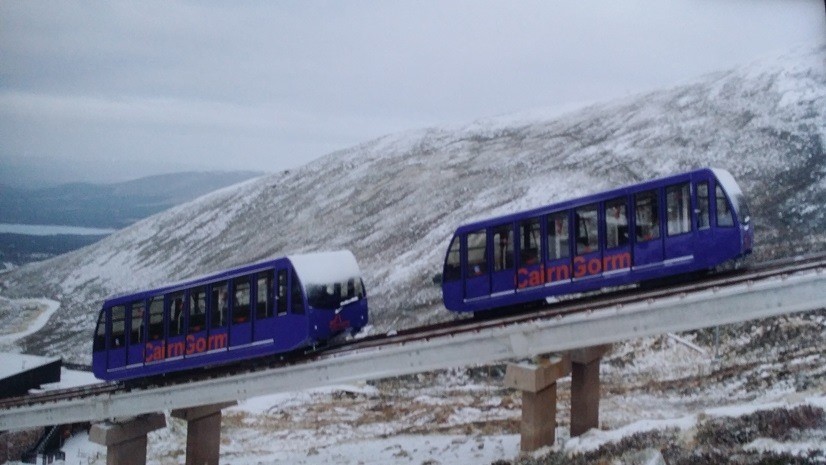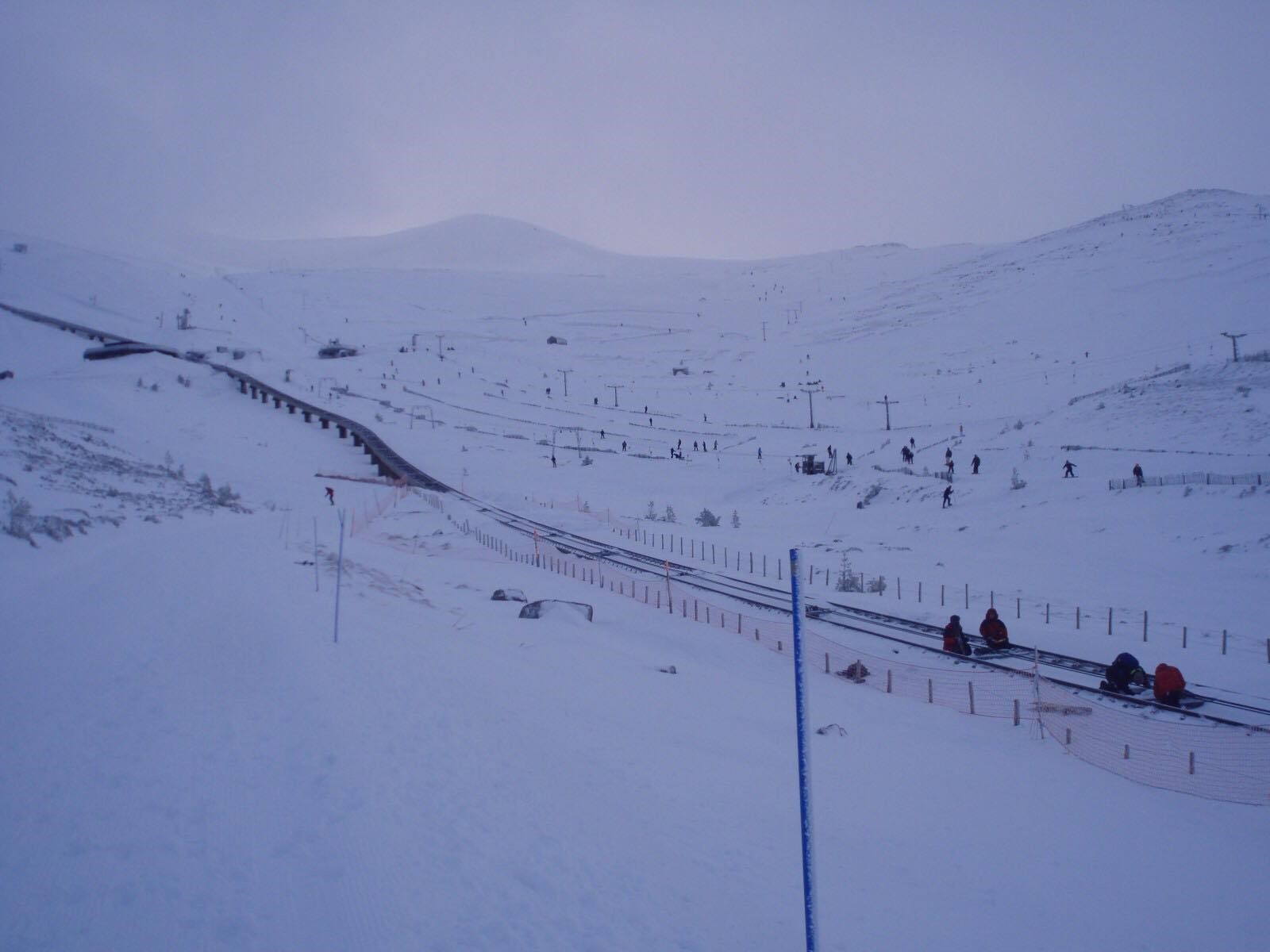
The Planning Application “Engineering Work for Strengthening Funicular Viaduct” was lodged with Highland Council on 13 March 2020 and called-in by the Cairngorm National Park Authority, on 23 March 2020, for determination by them (see here for planning documents). This post takes a critical look at some aspects of what is being proposed.
The Planning Statement
The planning statement, which can be found on the planning portal (link above) is the document that provides an overview of the application. It claims:
‘’The CairnGorm Mountain Funicular has contributed significantly during the past 2 decades to a sustainable economy in Aviemore and the Spey Valley and to the Highlands in general. It has helped to extend visitor numbers and economic activity to beyond the core tourist season and assist in aspirations for a more viable year-round economy’’
There is no data to support this statement and there has been no market research, commissioned by Highlands and Islands Enterprise within Aviemore and Strathspey, to provide evidence that would strengthen any case for committing >£10m of public money to the work necessary to bring the funicular back into use.
User Numbers
Parkswatch has previously published the Funicular user numbers (see here), which are worth another look: In the first 5 years of operation the [non skiing] passenger numbers averaged: 174,935. In the last 5 years of operation [prior to failure] the [non skiing] passenger numbers averaged: 130,990. That’s a fall of 43,945 paying customers each year being a drop of 25.12%. This fairly considerable fall in passenger numbers has occurred at a time when the tourism trade within Strathspey and throughout Scotland has been increasing, year on year. The bare figures also hide the fact that in the last 5 years of operation there were efforts made to boost passenger numbers by offering uneconomic promotions on Ipson and Groupon as well as targeting coach tour operators with similar uneconomic promotional offers.
It can also be said that if the Funicular did “contribute significantly during the last 2 decades to a sustainable economy in Aviemore and the Spey Valley and the Highlands in general” then that contribution is certainly diminishing.
Market Research
HIE have failed to conduct any market research that may have supported their case for spending >£10m pounds of public funds to repair the Funicular. Thankfully, a market research survey of 40 Aviemore based tourism related businesses (see here), conducted on behalf of the Badenoch and Strathspey Herald, found that the operation of the Funicular in the Spring, Summer and Autumn months, was unimportant for the majority of businesses. Businesses were asked if the closure of the Funicular has affected their business either negatively or not at all, in each season of the year. The answer was not at all for 75% in Spring, 80% in Summer, 65% in Autumn and 42.5% in winter.
There was general agreement that what is required is an efficient and reliable means of non-surface uplift that can transport all types of customers from the Daylodge to the Ptarmigan in all seasons of the year, profitably. That rules out the Funicular because it isn’t reliable, efficient or profitable.
Tourists come to Strathspey for many reasons and a run up/down the Funicular is just something that some of them may do while they are in the area. The evidence says that it isn’t the driver of the local or wider tourist economy that HIE would like people to believe it to be.
Funicular inefficiencies
Parkswatch has previously detailed (see here again) the inbuilt inefficiencies that plague the operation of the Funicular during the snowsports season when, as the only non-surface uplift from the Daylodge to the Ptarmigan, it is of crucial importance to the commercial viability of the hill business.
Snow Covered Track
Snow drifts over the track at a number of points along its length and this has to be cleared by hand before the Funicular can operate. That in turn leads to late opening which fuels customer dissatisfaction and is one of the reasons for the collapse of the snowsports market share (see here) which fell from a long-term average of 40.6% during the decade to 2013 to just 23.6% in the 2017/18 season which was the last one prior to the Funicular failure

The planning application does not include any engineering work that might solve or alleviate that problem. In fact, the support columns that are to be constructed uphill of the piers will lead to a greater likelihood of drifting snow accumulating around the Funicular structure, thereby adding to the problem. The Application also does not include engineering work that would address the problem of the mid-point of the track not coinciding with the mid-station where passengers upload/download (see top photo). The inefficiency associated with making double stops as each carriage takes a turn at being at mid-station will therefore not be addressed.
It’s quite clear from the planning application that nothing is being proposed that would remove these inbuilt inefficiencies and the operation of the Funicular will therefore continue to be impacted by them.
Conclusion
How will repairing the Funicular lead to a successful commercial operation in the future? All that is being proposed is to return it to the same operating parameters as existed before it failed. All of the evidence shows that the hill business wasn’t operating in a commercially viable way in the years leading up to 2018. HIE haven’t provided any evidence that would support a business case that details a different outcome into the future, after they spend >£10m of public funds on a repair.
What should happen now
Anyone who believes that repairing the Funicular isn’t in the best medium to longer term interests of the Cairngorm Mountain Business and to the local and wider economy should make their views known by:
- Objecting to the planning application on the CNPA Planning Portal. Closing date is 20/4/20
- Emailing your views to your local MSP.

There is indeed absolutely no evidence to support the economic benefits claimed for Badenoch and Strathspey and the rest of the Highlands by HIE as a result of the construction of the funicular railway on Cairn Gorm. The establishment of the Cairngorms National Park in 2003, two years after the funicular opened, is likely to have been far more effective in attracting visitors to the area, summer and winter, and distributing them more widely in the strath. Spending >10 £million on repairing the funicular at this time would be completely the wrong priority. That money is needed instead for the provision of new chairlifts on the mountain, consistent with the forthcoming master plan. Otherwise Cairn Gorm will continue its decline as the worst downhill ski resort in Scotland.